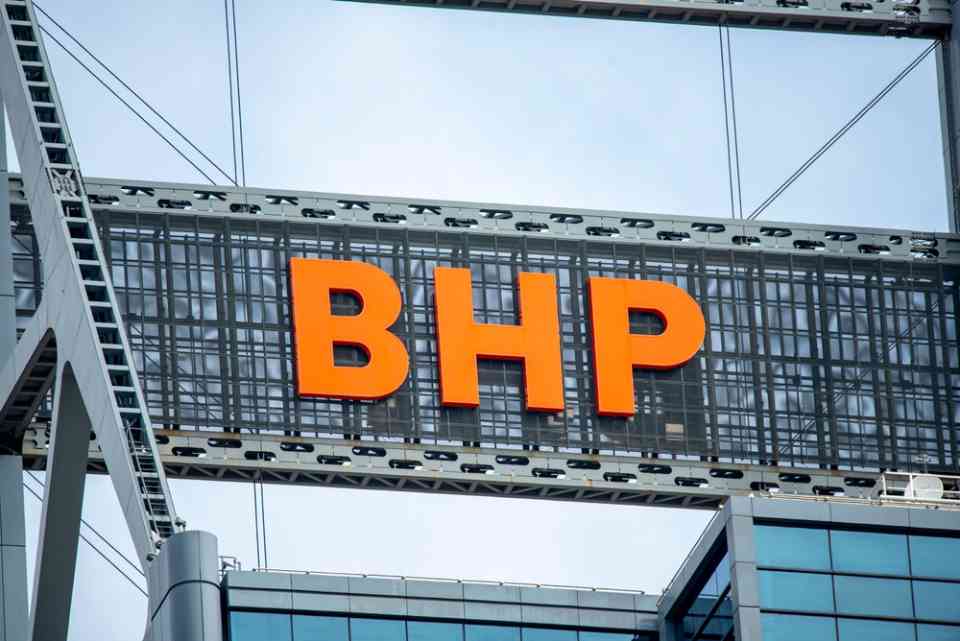BHP Reports Earnings Drop Amid Market Challenges, Eyes Growth in Copper and Potash

BHP has reported a 23% decline in attributable earnings for the half-year ending December 2024, with profits falling to $5.08 billion. The mining giant attributed the drop to lower realized prices for iron ore and steelmaking coal, which also contributed to an 8% year-on-year revenue decrease to $25.2 billion.
Despite the downturn, CEO Mike Henry identified early signs of recovery in China, resilient economic performance in the United States, and strong growth in India—described as a bright spot for commodity demand—as factors supporting future demand.
Iron Ore Segment Suffers from Price Drops and Weather Disruptions
BHP announced a reduction in its interim dividend to $0.50 per share, down from $0.72 a year earlier. The company’s iron-ore division reported a 26% drop in underlying operating earnings to $7.2 billion, following a decline in the average realized price to $81.11 per wet metric ton from $103.70 a year ago.
The company also warned that its full-year iron-ore output from Western Australia would likely fall short of the upper half of its projected range of 282 million to 294 million metric tons. This shortfall results from disruptions caused by Tropical Cyclone Zelia. However, BHP confirmed that unit cost expectations remain steady between $18 and $19.50 per metric ton.
Henry remarked that Western Australia Iron Ore (WAIO) has maintained its position as the world’s lowest-cost major iron-ore producer for five consecutive years. He noted that WAIO achieved a C1 unit cash cost of $17.50 per metric ton during the half-year, despite Australia experiencing an average inflation rate of 3.4%.
Looking ahead, BHP aims to increase WAIO production to 305 million tonnes annually and has suggested that production could reach 330 million tonnes per year if market conditions support expansion.
Monetary Easing and Copper Demand Outlook
BHP expressed optimism that global monetary easing could drive demand growth for iron ore and copper in the near term. The company suggested that ongoing interest rate cuts by central banks are likely to support recovery in steel and copper demand across OECD countries.
However, BHP cautioned that trade tensions could threaten economic recovery, particularly in developed markets.
The company projected that the copper market would remain relatively balanced in the near term, with demand from China expected to rise due to government stimulus focused on power infrastructure and the growing electric vehicle sector. Over the long term, BHP anticipates significant growth in global copper demand.
Henry projected that global copper demand would surpass 50 million tonnes annually by 2050—a 70% increase from 2021 levels—warning that current production plans are insufficient to meet this demand.
BHP’s Copper Strategy and Aspirations for Growth
Henry emphasized BHP’s strong position in the copper sector, highlighting that the company holds the world’s largest copper resource and has a track record of productivity, consistency, and reliability. He pointed out that BHP’s assets in Chile and South Australia offer compelling opportunities for further growth.
The company outlined its aspirational pathway, which could enable it to produce more than two million tonnes of copper annually from its operated assets. Henry remarked that while market conditions influence investment decisions, advancing BHP’s organic copper project pipeline remains highly attractive.
During the half-year, BHP achieved a 10% year-on-year increase in copper production. Copper’s contribution to underlying operating earnings rose to 39%, with total earnings from the segment reaching $5 billion.
Potash: A Promising Addition to BHP’s Portfolio
Henry also highlighted potash as a commodity with strong future potential. He confirmed that the Jansen potash project in Canada remains on schedule to begin production by the end of next year.
Describing the project’s strategic importance, Henry stated that it would diversify BHP’s portfolio and enhance resilience against market cycles. He added that BHP would be the only major diversified miner with exposure to potash, positioning the company uniquely in the global commodities market.
Have you read?
World’s Most Fashionable Countries.
World’s Best Countries For Business Expats.
Best Non-Native English Speaking Countries In The World.
Countries With The Largest Household Size.
World’s Best (And Worst) Countries For Older People To Live In.
Bring the best of the CEOWORLD magazine's global journalism to audiences in the United States and around the world. - Add CEOWORLD magazine to your Google News feed.
Follow CEOWORLD magazine headlines on: Google News, LinkedIn, Twitter, and Facebook.
Copyright 2025 The CEOWORLD magazine. All rights reserved. This material (and any extract from it) must not be copied, redistributed or placed on any website, without CEOWORLD magazine' prior written consent. For media queries, please contact: info@ceoworld.biz








